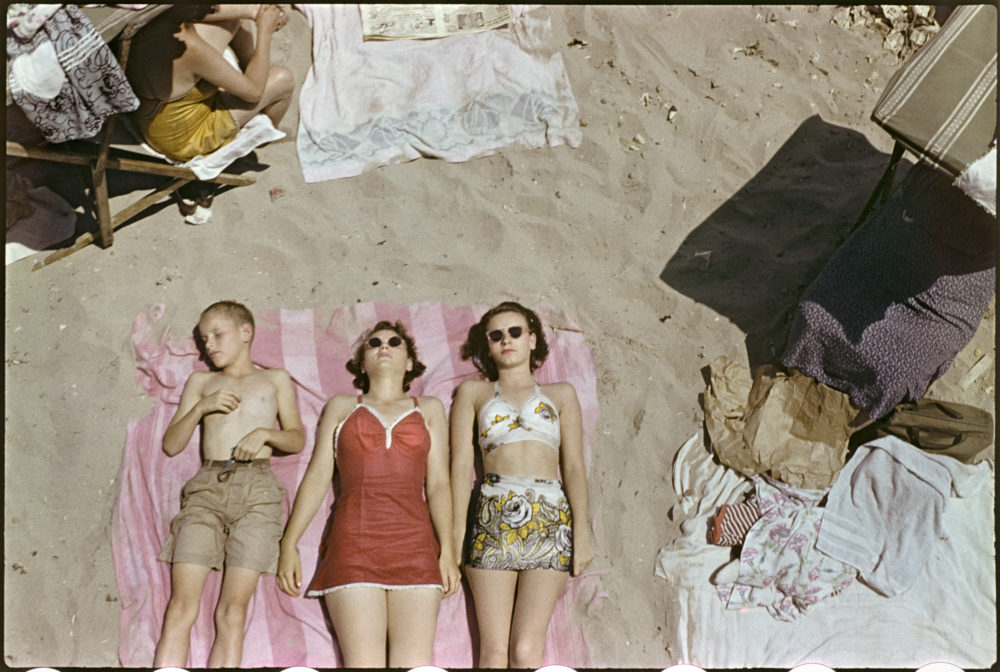
Coney Island, 1946. Photo by Paul Senn.
The International Center for Photojournalism is tucked away in Perpignan’s old Couvent des Minimes, formerly belonging to an order of mendicant hermits: I think the correct translation might be Sisters of Charity. The cloister which serves as exhibition space is next to the Caserne Gallieni in the Saint-Jacques area of this French-Catalan town, a warren of narrow streets which used to welcome the French colonial army. Now the area is somewhat gentrified on the sunny side of the hill, the dark side remaining populaire and insalubrious.
The cloister has been boarded up against the elements, which is a pity since the stonework is lovely. Outside there was snow on the Canigou, and a glittery March light played over the military brickwork. The day I visited, two of Paul Senn’s photos had been blown to the ground by the chilly tramontane, so there is good reason to enclose the ambulatory. Pacing the four sides felt somewhat like completing a stations of the cross of the twentieth century: the Depression followed by the Spanish Retirada and then the scourge of the Second World War. By the end, a sequence of big colour photos of Coney Island, we had ascended to American heaven with all the angels and saints.

Swiss agricultural workers in the United States, 1946. Photo by Paul Senn
Paul Senn (1901-1953) was a Swiss photographer whose work was known to me and I was glad to be able to survey its range from the labour protests in Geneva in 1932 to Spain to Coney Island after the war. It’s a noble trajectory for a photojournalist who died youngish. He was always sympathetic to the victims of history and shows us the mass of ordinary humanity at the mercy of forces larger than themselves: war, expatriation, human cruelty.

Swiss migrants in the US, 1946. Photo by Paul Senn.
Senn’s reporting coincided with the popularity of photojournalism in Switzerland during the Thirties, when illustrated magazines brought the Federation and the wider world into the living room. ABC and Du, to name two of them, hosted the work of Werner Bischof, Rene Burri and Annemarie Schwarzenbach, as well as Paul Senn’s pictures. The Swiss-born American photographer Robert Frank, whose portraits of Americans in the 1950s were pivotal, belongs to a later generation of photographers keen to give us a gritty realist picture of the world.

Mexico. Photo by Paul Senn
Senn was drawn early to the street, to protest and to the compassionate lens. We might at a stretch associate Geneva with the International Labour Organisation (born of the Paris Peace Conference in 1919 and celebrating its centenary in October this year) but perhaps not with labour protests. 1932 was the year when Swiss workers, among others, began to bear the brunt of the financial crash of 1929 and employers began to roll back hard-won rights and workplace norms in the name of austerity. Austerity for some turns a quick buck for others; we know that story in a minor key. The survey of two decades of Senn’s work in Perpignan begins in Geneva with the police firing on workers protesting for better conditions.
In 1934 Senn visited the cinnabar mines of Almadén in Castile-Lamancha in Spain to report on the plight of workers suffering from mercury poisoning. The mines, extracting cinnabar as a pigment and mercury for medicine since Roman times, employed mostly North African and convict labour in appalling slave-like conditions. The mines have since been closed – we might think this was for humanitarian reasons, but it was the price of mercury falling.
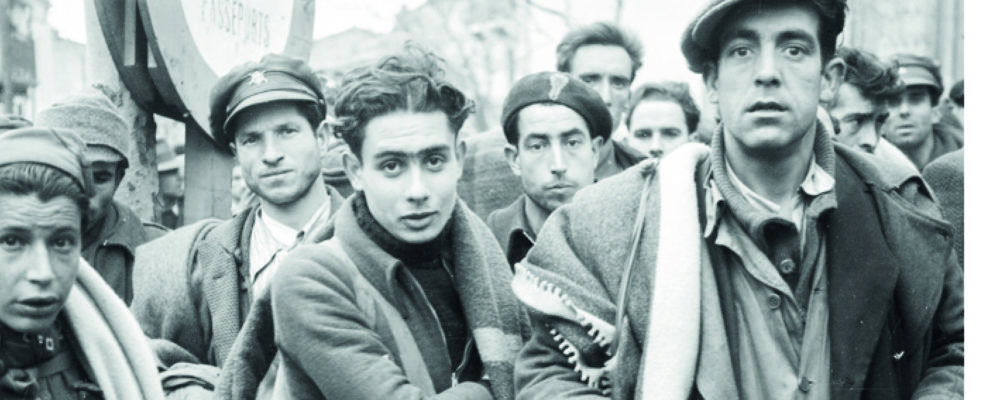
Senn’s report on the Spanish exile, la Retirada, appeared in Zürcher Illustrierte, February 1939.
The Spanish la Retirada is the name given to the surge of refugees fleeing north across the Pyrenees following Franco’s victory in the Spanish Civil War in 1939 and his taking of Barcelona. Senn’s shots of refugees at the crossing point of Le Perthus and the makeshift camps that welcomed them remind us that the south escaping north is not just a recent phenomenon. Catalan ethnicity, straddling as it does the Spanish-French border, helped in this case. Perpignan flies the Catalan flag with a pride and insouciance that you won’t find with the Irish tricolour in Armagh, say, or the Union Jack in Monaghan.
Neutral Switzerland mobilised 450,000 troops in 1939 at the outbreak of the war and Senn snapped scenes of departure under General Guisan’s call to arms. It was the beginning of a lifetime of watching the way both war and peace affected ordinary people. At the time of France’s capitulation to the advancing Germans in June 1940, he was at Le Chauffour in Switzerland’s Jura Mountains, where 40,000 French troops found refuge. They were welcomed by the local Jurassiens and disarmed immediately according to international law. These images of an army routed, many of them colonial troops, spahis wearing North African headdress, remind us of a forgotten corner of the war.
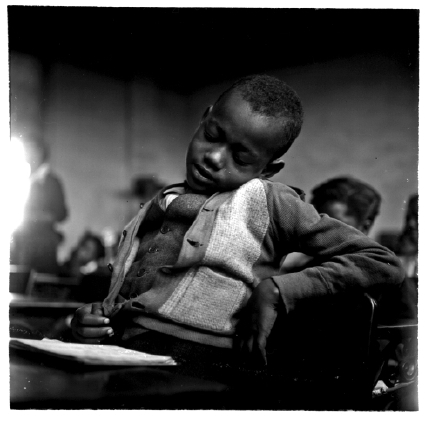
New Bern, South Carolina, 1937. © Gottfried Keller-Stiftung, Bern.
In 1939 he was in New Bern (“Birthplace of Pepsi”), North Carolina, a Swiss colony founded in the 18th century. Like Annemarie Schwarzenbach, who photographed Swiss immigrants in the Cumberland Mountains of Tennessee, Senn had an eye for the audience at home as well as the underside of Swiss wealth. Switzerland has its diaspora too, scattered to the four corners, mostly from poor mountain regions like Ticino.
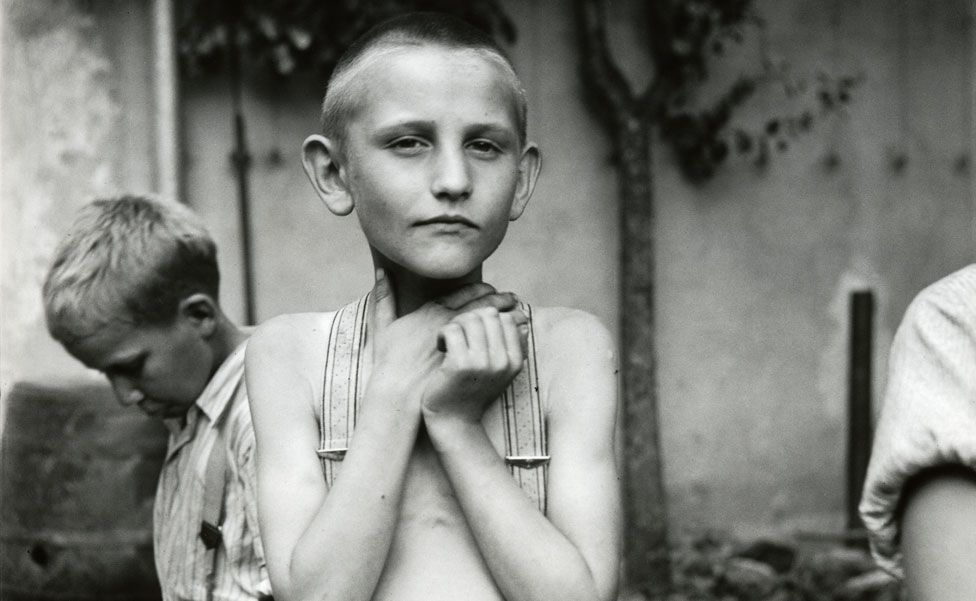
A victim of Switzerland’s foster care system. Photo by Paul Senn
He was one of the first to document the plight of Swiss children quasi-adopted, hired out and exploited as child labor on mountain farms, at a time when this shameful episode was swept under the carpet. “Between 1800 and the 1950s, Swiss authorities forcefully placed over a hundred thousand orphans, illegitimate children and children from broken homes as labourers on farms.” This state-sanctioned, dark chapter in Swiss social history, touchy to mention even now, has been explored in Markus Imboden’s The Foster Boy (Der Verdingbub: 2012), the most successful Swiss film in recent years. It focuses on the equivalent of the Irish Magdalen Laundries scandal (The Magdalen Sisters: 2002, Philomena: 2013), when girls who were “troublesome” were squirrelled away to work for their keep and the children they gave birth to sent for adoption to the United States. England sent such rejects to Australia as child migrants or into child labour at home; Ireland and Switzerland farmed them out; other countries had somewhat similar schemes. It reminds us of an earlier common market and social polity.
Senn also chronicled the destruction of Lyon by Allied bombing in 1944, the exhumation of mass graves at nearby Bron aerodrome, where the Nazis had assassinated and buried more than a hundred Jewish prisoners.

Coney Island, 1946. Photo by Paul Senn
At war’s end we get an explosion of colour and larger formats, reflecting perhaps the needs of magazines at the time. Senn used a Leica for his rectangular shots and a Rolliflex for the more intimate square format. The post-war work shows the now standard iconography of torn advertisements on gable walls, zig-zag fire escapes and their shadows, the urban jungle of America – but in wonderful hyper-realist saturated colour, lightly washed by the passage of time. Coney Island and its over-crowded beach is a fairly standard visual metaphor for the pullulation of American life, its democratic ethos. Senn’s work doesn’t over-aspire to the neat aesthetics of art photography and is all the better for it. It keeps a reportorial edge, a feeling of bygone times.
There is a parallel exhibition of Paul Senn’s wonderful Retirada photos and his reports from Rivesaltes refugee camp at the Camp de Rivesaltes Memorial Center, which will be the focus of another blog entry from me soon.

Coney Island, 1946. Photo by Paul Senn
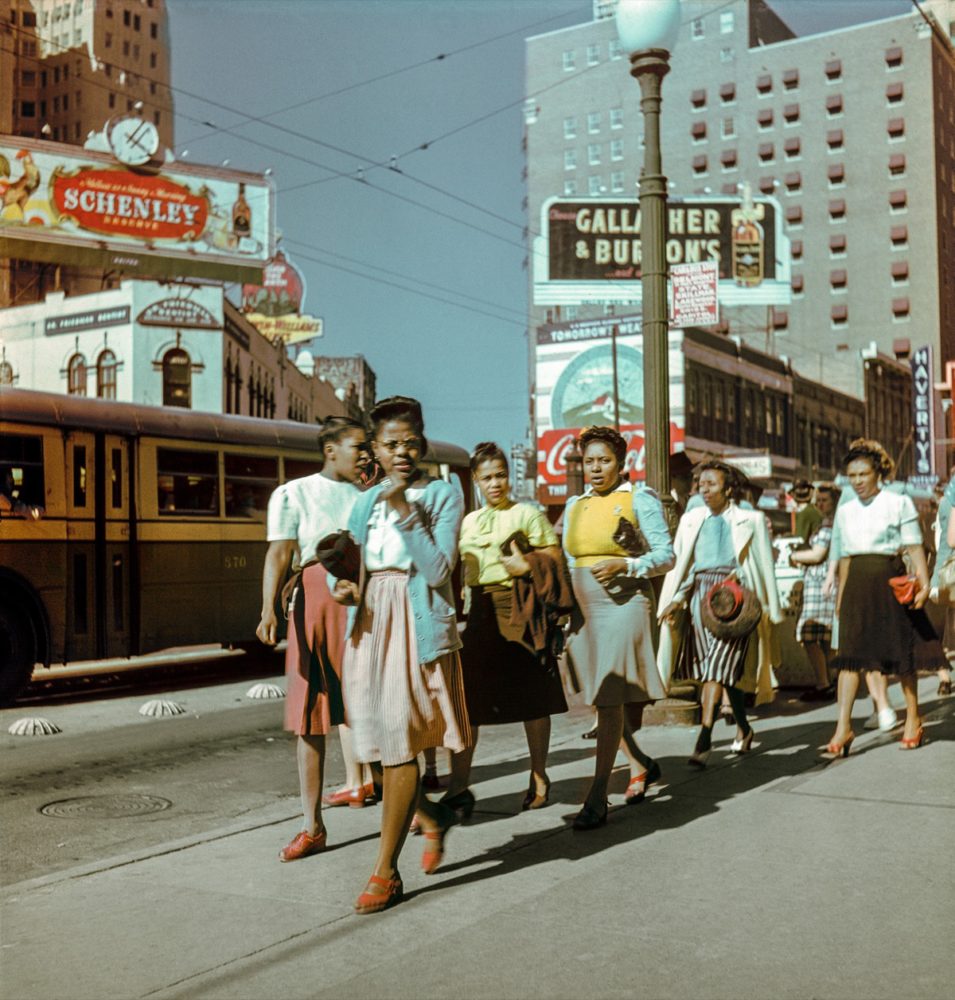
Harlem street scene, 1946. Photo by Paul Senn

